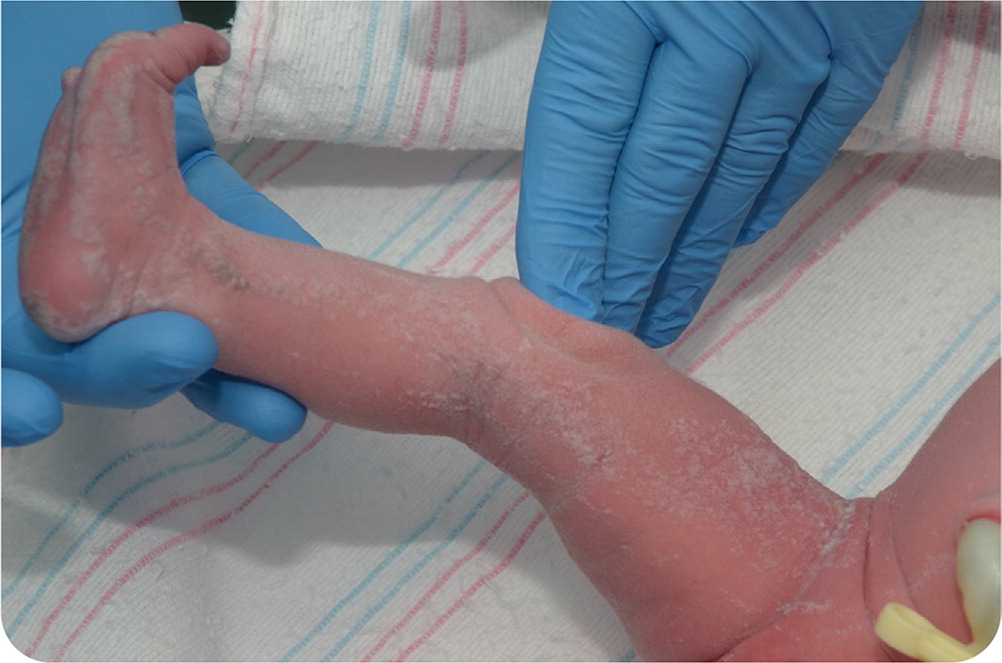
Linear Skin Lesion in a Newborn
Am Fam Physician. 2023;108(3):301-302
Author disclosure: No relevant financial relationships.
A female infant born at 39 1/7 weeks of gestation via uncomplicated spontaneous vaginal delivery was evaluated in the delivery room. Her Apgar scores were 9/9. Physical examination revealed dry, whitish-gray plaques in a linear pattern from the right inguinal area over the medial thigh and lateral shin, involving the plantar and dorsal surfaces of the right foot (Figure 1 and Figure 2). The remainder of the physical examination was unremarkable. The patient was afebrile with a normal pulse and respiratory rate. Laboratory test results were within normal limits, including routine newborn screenings and complete blood count.


Question
Based on the patient's history and physical examination findings, which one of the following is the most likely diagnosis?
A. Congenital herpes simplex.
B. Congenital syphilis.
C. Inflammatory linear verrucous epidermal nevus.
D. Sebaceous nevus.
Discussion
The answer is C: inflammatory linear verrucous epidermal nevus (ILVEN), a variant of an epidermal nevus or mole. It is characterized by recurrent inflammation with a chronic eczematic or psoriasiform component. ILVEN is a benign overgrowth of cells in the epidermis that presents as erythematous, verrucous papules and plaques that characteristically follow the lines of normal embryologic cell migration in the skin (Blaschko lines). The lesions can be red, brown, or the same color as the surrounding skin.1 ILVEN is commonly found on the lower extremities. Children are most often affected, although cases of adult-onset ILVEN have been reported.2
Subscribe
From $165- Immediate, unlimited access to all AFP content
- More than 130 CME credits/year
- AAFP app access
- Print delivery available
Issue Access
$59.95- Immediate, unlimited access to this issue's content
- CME credits
- AAFP app access
- Print delivery available

